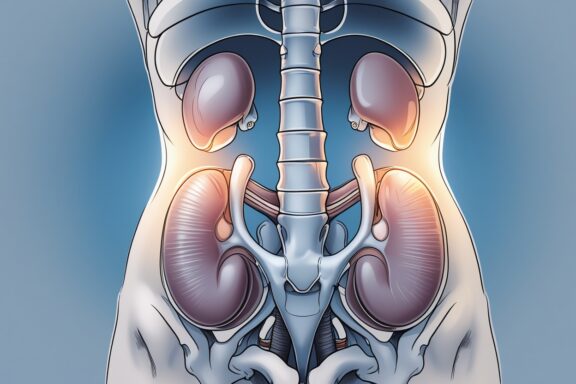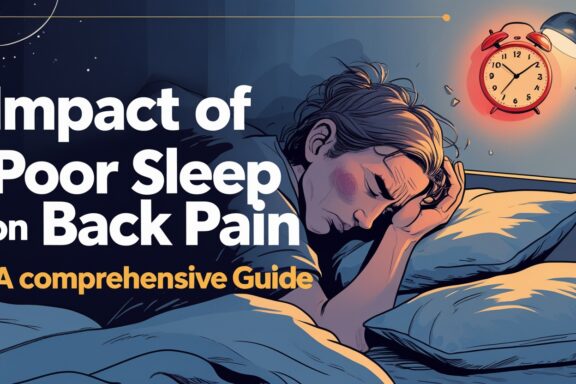Lower back pain affects millions worldwide, but could a simple mineral be the key to relief? Magnesium, often called the “miracle mineral,” plays a crucial role in muscle function and pain management. This comprehensive guide explores how magnesium for lower back pain relief works, optimal dosages, and the science behind its effectiveness.
Lower back pain – ugh, what a literal pain in the… well, back! If you're reading this, chances are you've been wrestling with that nagging ache that makes getting out of bed feel like climbing Mount Everest. Here's the thing: while conventional treatments certainly have their place, there's a natural solution that's been hiding in plain sight. Enter magnesium, nature's own muscle relaxer and pain fighter.
You see, magnesium deficiency is surprisingly common, affecting up to 50% of adults in developed countries. And guess what? This deficiency often correlates with increased muscle tension, cramping, and yes – lower back pain. But before you dismiss this as another health fad, let's dive into the real science behind why magnesium for lower back pain relief isn't just wishful thinking – it's backed by solid research.
Understanding the Magnesium-Pain Connection
Here's where things get fascinating (and a bit nerdy, but stick with me). Magnesium acts like a natural calcium channel blocker in your body. What does that mean exactly? Well, when calcium floods into muscle cells, it triggers contraction. Magnesium, on the other hand, helps muscles relax by regulating calcium flow. It's like having a bouncer at the cellular level – keeping things balanced and preventing those painful muscle spasms that can wreak havoc on your lower back.
The relationship between magnesium deficiency and musculoskeletal pain has been well-documented in numerous studies. A 2017 study published in the Journal of the American Osteopathic Association found that magnesium supplementation significantly reduced chronic low back pain in participants over an eight-week period. The researchers noted that “magnesium deficiency may be associated with increased pain sensitivity and muscle tension.”
Moreover, magnesium plays a crucial role in over 300 enzymatic reactions in your body – many of which directly impact muscle function, nerve transmission, and inflammation control. When you're running low on this essential mineral, your muscles can't function optimally, leading to increased tension, reduced flexibility, and ultimately, pain.
Types of Magnesium: Not All Are Created Equal
Now, here's where things can get a bit tricky – not all magnesium supplements are the same. Walk into any health store, and you'll be bombarded with options: magnesium oxide, citrate, glycinate, malate… the list goes on! Each form has different absorption rates and specific benefits for pain management.
Magnesium Glycinate is often considered the gold standard for muscle-related issues. It's chelated with glycine, an amino acid that enhances absorption and has its own calming properties. This form is less likely to cause digestive upset – a common complaint with other magnesium types. Plus, glycine itself has been shown to improve sleep quality, which is crucial since poor sleep can exacerbate pain perception.
Magnesium Malate combines magnesium with malic acid, which plays a role in cellular energy production. This form is particularly beneficial for those dealing with fibromyalgia or chronic fatigue alongside their back pain. The malate component helps support mitochondrial function, potentially reducing muscle fatigue and soreness.
Magnesium Citrate, while more affordable and widely available, is primarily used for its laxative effects. However, it still provides systemic magnesium benefits once absorbed. Just be prepared for potential digestive side effects if you take too much too quickly!
Optimal Dosage: Finding Your Sweet Spot
Alright, let's talk numbers – because when it comes to magnesium for lower back pain relief, dosage matters. The recommended dietary allowance (RDA) for magnesium varies by age and gender, but for most adults, it ranges from 310-420mg daily. However, for therapeutic purposes related to pain management, some healthcare providers recommend higher amounts.
Here's a general guideline for magnesium supplementation:
- Starting dose: 200-300mg daily with food
- Therapeutic dose: 400-600mg daily, divided into two doses
- Maximum safe dose: 800mg daily (though doses above 350mg from supplements may cause digestive issues)
Start low and go slow – that's the mantra here. Begin with 200mg daily and gradually increase every few days until you find relief without unwanted side effects. Your body will thank you for the gentle approach, and you'll avoid the dreaded “magnesium flush” (trust me, you don't want to experience that unexpectedly).
It's worth noting that timing can be crucial too. Many people find taking magnesium in the evening helpful since it can promote relaxation and better sleep – both essential for pain recovery. However, if you're dealing with daytime muscle tension, splitting your dose between morning and evening might work better.
The Science Behind Magnesium's Pain-Fighting Powers
Let's get into the nitty-gritty of how magnesium actually fights lower back pain. The mechanism isn't just one-dimensional – it's more like a multi-pronged attack on pain from several angles.
Muscle Relaxation: As mentioned earlier, magnesium acts as a natural muscle relaxant by regulating calcium flow. When muscles can relax properly, tension decreases, and so does pain. A study in Magnesium Research demonstrated that magnesium supplementation reduced muscle cramping by 42% in participants with chronic muscle pain.
Anti-inflammatory Effects: Chronic inflammation is often at the root of persistent back pain. Magnesium helps regulate inflammatory markers like C-reactive protein (CRP) and interleukin-6 (IL-6). Research published in the European Journal of Clinical Nutrition showed that adequate magnesium intake was associated with lower levels of inflammatory markers.
Nerve Function: Your nervous system relies heavily on magnesium for proper function. Low magnesium levels can lead to increased nerve excitability, making you more sensitive to pain. By maintaining optimal magnesium levels, you're essentially turning down the volume on your pain signals.
Sleep Quality: Here's something interesting – magnesium deficiency can disrupt sleep, and poor sleep makes pain worse. It's a vicious cycle. Magnesium helps regulate melatonin production and activates the parasympathetic nervous system, promoting deeper, more restorative sleep.
Dietary Sources: Food First Approach
While supplements are convenient, let's not forget about good ol' fashioned food sources. Your body often absorbs nutrients from whole foods more effectively than from pills. Plus, magnesium-rich foods come with bonus nutrients that work synergistically.
Top Magnesium-Rich Foods:
- Dark leafy greens (spinach, Swiss chard, kale)
- Nuts and seeds (almonds, pumpkin seeds, cashews)
- Dark chocolate (70% cacao or higher)
- Avocados
- Legumes (black beans, chickpeas, lentils)
- Whole grains (quinoa, brown rice, oats)
- Fish (salmon, mackerel, halibut)
Here's a pro tip: combine magnesium-rich foods with those high in vitamin D and calcium for optimal muscle and bone health. Think salmon with quinoa and steamed spinach – not only delicious but also a powerhouse meal for back health.
However, here's the reality check – even with a perfect diet, it can be challenging to get therapeutic levels of magnesium from food alone, especially if you're dealing with chronic pain. That's where strategic supplementation comes into play.
Potential Side Effects and Precautions
Now, before you rush out and start megadosing on magnesium (please don't!), let's talk about potential side effects. While magnesium is generally safe, too much too fast can cause some unpleasant digestive issues.
Common side effects include:
- Diarrhea (the most common complaint)
- Nausea
- Stomach cramps
- Bloating
These effects are usually dose-dependent and temporary. Starting with smaller amounts and taking magnesium with food can minimize these issues. If you have kidney problems, heart conditions, or take certain medications, consult with your healthcare provider before starting magnesium supplementation.
Drug Interactions to Consider:
- Antibiotics (particularly quinolones and tetracyclines)
- Diuretics
- Proton pump inhibitors
- Blood pressure medications
Magnesium can affect the absorption of some medications, so timing matters. Generally, it's recommended to take magnesium at least 2 hours apart from other medications.
Combining Magnesium with Other Natural Approaches
Here's where things get really interesting – magnesium works even better when combined with other natural pain management strategies. It's like assembling a dream team for back pain relief.
Magnesium + Vitamin D: This dynamic duo works together for optimal muscle function. Vitamin D deficiency is also linked to chronic pain, and magnesium helps activate vitamin D in your body. Studies suggest that combining these nutrients may be more effective than either alone.
Magnesium + B-Complex Vitamins: B vitamins, particularly B6 and B12, work synergistically with magnesium for nerve health. This combination can be particularly beneficial for those dealing with nerve-related back pain or sciatica.
Topical Applications: Don't overlook magnesium oil or Epsom salt baths! While the evidence for transdermal absorption is mixed, many people report significant relief from topical magnesium applications. Plus, a warm Epsom salt bath is inherently relaxing and can help reduce muscle tension.
Physical Therapy and Exercise: Magnesium supplementation can enhance the benefits of physical therapy by improving muscle recovery and reducing exercise-induced soreness. It's like giving your muscles the fuel they need to heal and strengthen properly.
Real-World Success Stories and Clinical Evidence
The anecdotal evidence for magnesium's effectiveness is compelling, but let's look at what the research actually says. A 2020 systematic review published in Nutrients analyzed multiple studies on magnesium supplementation for chronic pain conditions. The researchers concluded that “magnesium supplementation appears to be beneficial for various chronic pain conditions, including musculoskeletal pain.”
One particularly interesting study followed 60 patients with chronic low back pain for 6 months. Those who received 400mg of magnesium daily showed significant improvements in pain scores and functional disability compared to the placebo group. What's more, the benefits persisted even after the study ended, suggesting lasting improvements in muscle function.
Another fascinating aspect is how quickly some people notice results. While supplements typically take weeks to build up in your system, some individuals report feeling less muscle tension within days of starting magnesium supplementation. This rapid response might be due to the correction of a significant deficiency.
Frequently Asked Questions
How long does it take for magnesium to work for back pain? Most people notice some improvement within 1-2 weeks of consistent supplementation, with optimal benefits typically seen after 4-6 weeks. However, some individuals with severe deficiency may experience relief within just a few days.
Can I take magnesium with ibuprofen or other pain medications? Generally yes, but there are no known direct interactions between magnesium and common NSAIDs like ibuprofen. However, always consult your healthcare provider, especially if you're taking multiple medications.
Is it better to take magnesium morning or night? For back pain relief, evening dosing is often preferred since magnesium can promote relaxation and better sleep. However, if you experience daytime muscle tension, splitting the dose between morning and evening may be more effective.
What's the difference between magnesium supplements and Epsom salt baths? Epsom salt contains magnesium sulfate, which may be absorbed through the skin during baths. While this provides relaxation benefits, oral supplementation is more reliable for achieving therapeutic blood levels of magnesium.
Can magnesium deficiency cause back pain even if I eat well? Absolutely! Modern soil depletion, food processing, and certain medications can reduce magnesium absorption or increase its excretion. Even health-conscious individuals can be deficient.
Final Thoughts: Your Path to Natural Pain Relief
Look, nobody wants to live with chronic back pain – it affects everything from your mood to your productivity to your relationships. While magnesium isn't a magic bullet, it's a scientifically-backed, natural approach that addresses one of the root causes of muscle-related pain: mineral deficiency.
The beauty of magnesium for lower back pain relief lies in its multifaceted approach. It doesn't just mask symptoms like some pain medications do – it actually supports your body's natural healing processes. By improving muscle function, reducing inflammation, enhancing sleep quality, and supporting nerve health, magnesium tackles pain from multiple angles.
Remember, consistency is key here. Like most nutritional interventions, magnesium works best when taken regularly over time. Give your body at least 4-6 weeks to respond, and don't get discouraged if you don't see immediate dramatic changes. Healing takes time, but it's so worth it when you can finally move freely without that constant ache nagging at you.
Whether you choose to increase magnesium-rich foods in your diet, add a high-quality supplement, or combine both approaches, you're taking a proactive step toward better health. Your back – and your entire body – will thank you for it.







